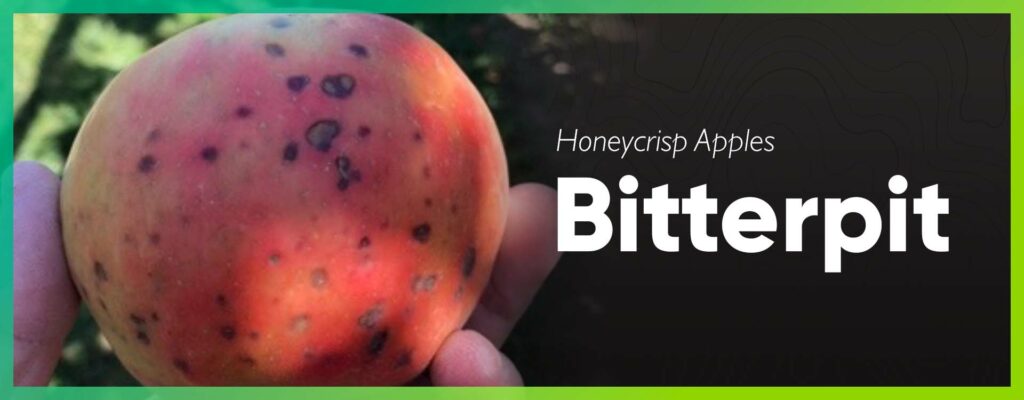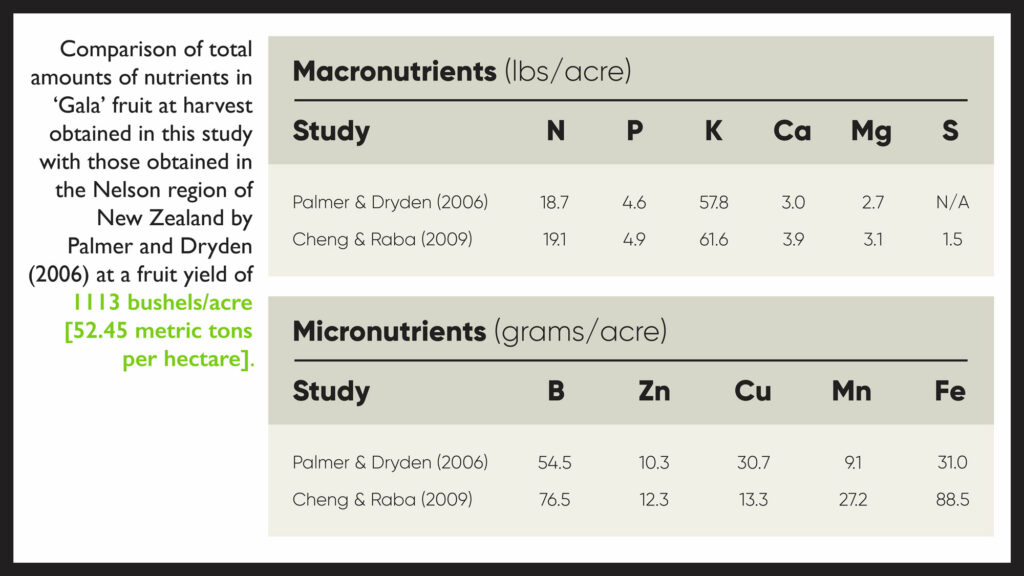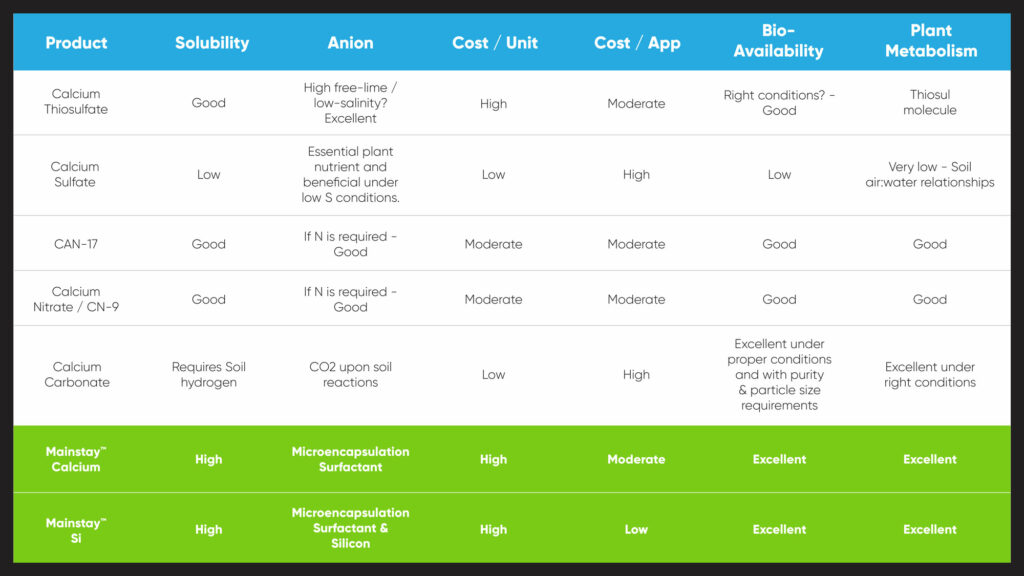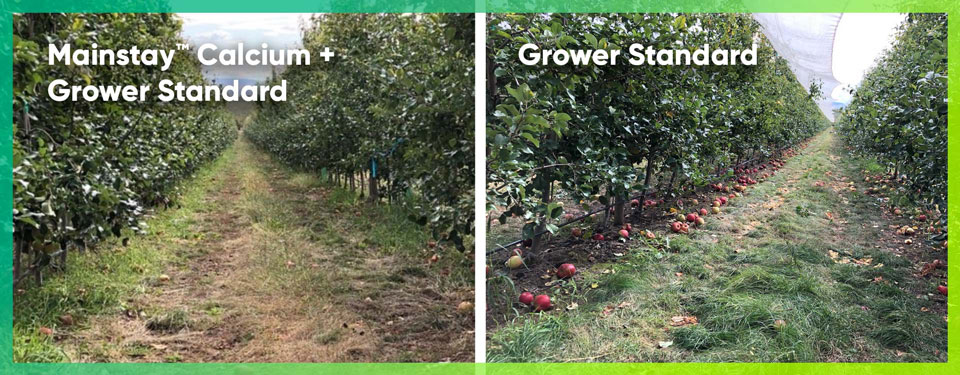As a structural component, calcium plays a critical role in the form and function of plant cells. Calcium also is an essential part of plant metabolic processes which regulate a plants successful response to abiotic stress. In production agriculture, management of calcium inputs can make or break the farm. Good calcium managers enjoy distinct yield and quality advantages regardless of the type of crop. But achieving optimal calcium nutrition is often elusive and is affected by a wide range of factors.
A great example of calcium critical crops can be found in the PNW tree fruit industry. While calcium nutrition has always been on the forefront in tree fruit due to its role in dessert quality perception (crunch) and mitigating bruising and storage disorders, the recent explosion in planting of Honeycrisp apples has put a big exclamation point on it. Honeycrisp is really the darling of the industry not just for its appeal as a great eating apple, but also for its track record providing stunning profits to growers. But not everyone is smiling as losses to bitterpit (see photo) in the field and out of storage are a huge problem. Honeycrisp genetics make it more susceptible to bitterpit than other varieties and calcium nutrition is the culprit. Growers can lose as much as 75% of their crop to bitterpit. The severity of this problem is driving renewed interest in improving calcium nutrition.

Currently, the most used calcium source is foliar applied calcium chloride in the PNW. While there is a substantial body of research that proves the benefit of calcium chloride, poor uptake efficiency and the potential for chloride phytotoxicity make it less than a perfect solution. Recently one of our researchers at Washington State University pointed out that only 10% of a typical calcium spray hits a piece of fruit and then only 10% gets absorbed. Given the fact that calcium is not mobile in the plant, 1% efficiency is the expectation for a trip through the orchard. So, growers must apply calcium sprays at least weekly to even move the needle slightly where disorders are a problem. Application costs can then really become an issue.
One of the most interesting features of this problem is the relatively small amount of calcium that is needed to improve outcomes in the fruit itself. A typical apple crop of 80 bins to the acre will remove around 3 to 5 pounds of total calcium in the fruit (See Chart).

There is variability depending on the type of apple, but calcium related fruit firmness problems and disorders are often fixed by adding just a pound or two per acre (in the fruit). Meanwhile we are throwing many times as much – hundreds of pounds per acre in some cases to alleviate the problem. Obviously, there is an opportunity to improve outcomes here. Tree fruit is not the only crop to potentially benefit. Understanding the physiology of the crop in question, the status of the soil it resides in, and the various calcium fertility options are key.
When we talk about fertilizer, it seems like the plant available portion of the product is always a point of discussion. The fact is many of the choices we have are inefficient and Calcium products are a prime example. The chart below (see chart) lists several common calcium fertilizers including a couple from the Redox catalog. When compared as a group the plant availability of traditional amendments is conditional in most cases. A rating of “good” is relative.

Using the PNW again as an example – while Calcium Chloride is commonly used on the foliar side, the most common calcium amendment for soil application is gypsum (calcium sulfate). It is the amount of this product that is used considering application costs and relative efficacy is amazing. (see chart). Frankly, most gypsum applications do nothing to significantly change the bio-available calcium content of the soil. Most of the applied material remains calcium sulfate despite an often-misinterpreted soil sample increase in exchangeable calcium. (Read more about gypsum here: link to Danny’s blog)
Meanwhile, Mainstay Calcium and Mainstay Si are both Redox offerings and are categorized as “excellent” in terms of relative bioavailability. Consistent with all Redox offerings the calcium products are also described as “reacted”. In this case the raw materials calcium carbonate or calcium silicate are chemically combined or reacted with a proprietary surfactant encapsulation. This encapsulation protects the divalent charge on the calcium ion and uptake of calcium is dramatically improved when these are applied either to the soil or foliage. In the PNW these two products are by far the most popular from the entire Redox line for their demonstrated efficacy.
Below is a picture that shows the orchard floor in a Honeycrisp block. Carefully timed soil and foliar applications of Redox calcium products were applied to the block on the left while a typical calcium chloride program was applied to the right. Fruit with calcium disorders was discarded on the ground as it was removed from the trees. The photos exemplify commonly observed benefits of using Redox calcium.

Mainstay Calcium and Mainstay Si have shown to be very effective in providing a much-needed improvement in calcium nutrition in tree fruit. Discuss the possibilities for Redox calcium products for your specific crop needs with your agronomist. Check out the library of Redox Results on both Mainstay Calcium and Mainstay Si.
Questions? Want to know more about Calcium?
Subscribe to receive our Redox Bio-Nutrients updates